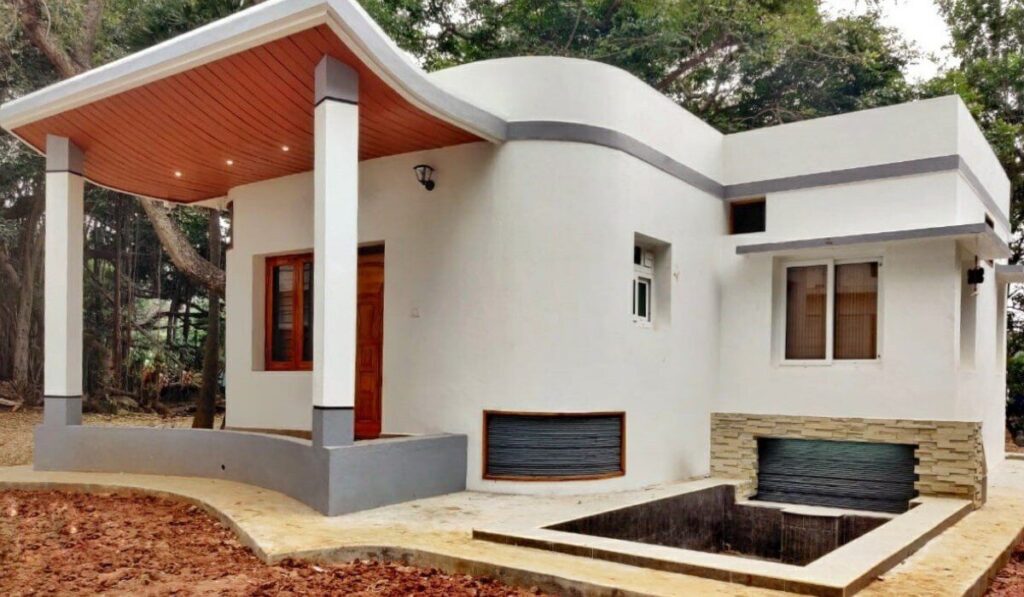3D printing technology is revolutionizing the construction industry by offering a faster, more cost-effective, and environmentally friendly way to build homes. This innovative approach, also known as additive manufacturing, allows for the creation of complex structures by layering material, typically concrete or other building substances, with precision and minimal waste. With 3D printing, the construction industry is undergoing a significant transformation, reducing construction time, costs, and labor, while also addressing housing shortages and sustainability challenges.
One of the most significant advantages of 3D printing in construction is the speed at which homes can be built. Traditional construction methods often take months or even years to complete a project, involving a large workforce, a range of materials, and multiple steps in the building process. In contrast, 3D-printed homes can be completed in a matter of days or weeks. This rapid construction process is made possible by the automated nature of 3D printing, where the printer follows a digital blueprint and builds the structure layer by layer. As a result, homes can be erected at unprecedented speeds, addressing urgent housing needs, particularly in disaster-stricken areas or regions facing housing shortages.
The cost-effectiveness of 3D printing in construction is another key factor driving its adoption. The technology significantly reduces the need for manual labor, as much of the construction process is automated. This translates into lower labor costs and minimizes the risk of human error during the building process. Additionally, 3D printing allows for more efficient use of materials, reducing waste and lowering material costs. In traditional construction, excess materials are often discarded, but with 3D printing, only the necessary amount of material is used to build each layer. This not only cuts costs but also makes the process more sustainable.
Sustainability is a critical concern in today’s construction industry, and 3D printing offers a greener alternative to conventional building methods. The construction sector is one of the largest contributors to global carbon emissions, primarily due to the high energy consumption and material waste associated with traditional methods. By using 3D printing, the amount of waste generated during construction is drastically reduced. Furthermore, some 3D printers are capable of using sustainable or recycled materials, such as eco-friendly concrete mixes or biodegradable substances, to create structures. This shift toward sustainable building materials and practices helps reduce the environmental impact of construction.
3D printing also offers a high level of design flexibility, enabling the construction of complex and customized architectural designs that would be difficult or costly to achieve with traditional methods. The technology allows for the creation of intricate geometries and unique structures with precision, offering architects and builders the freedom to explore new design possibilities. Whether it’s curved walls, intricate facades, or modular components, 3D printing enables the production of homes that are not only functional but also aesthetically innovative.
One of the most promising applications of 3D printing in construction is its potential to address the global housing crisis. In many parts of the world, particularly in developing countries, there is a significant shortage of affordable housing. 3D printing offers a solution by drastically reducing construction costs and time, making it possible to build affordable homes on a large scale. Several pilot projects around the world have already demonstrated the feasibility of using 3D printing to construct low-cost housing in record time. For example, in countries like Mexico and India, non-profit organizations and tech companies have partnered to create entire communities of 3D-printed homes for low-income families.
In addition to residential housing, 3D printing is being used to construct a variety of other buildings, including schools, healthcare facilities, and emergency shelters. The versatility of 3D printing allows it to be adapted to different building needs and environments, making it a valuable tool for constructing essential infrastructure in underserved areas. In disaster relief scenarios, where time is of the essence, 3D printing can be used to quickly build temporary or permanent shelters for displaced populations, providing a fast and efficient solution to housing shortages in emergency situations.
Despite the many advantages of 3D printing in construction, there are still challenges that need to be addressed before it can become a widespread solution. One of the primary challenges is the need for large-scale 3D printers capable of building multi-story structures. While current 3D printers are effective for single-story homes and smaller buildings, scaling the technology for larger, more complex projects remains a technical hurdle. Additionally, the adoption of 3D printing in construction requires changes in building regulations and industry standards, as existing codes may not account for the unique aspects of 3D-printed structures.
As 3D printing technology continues to evolve and improve, its role in the construction industry is expected to grow significantly. With its potential to build homes faster, cheaper, and more sustainably, 3D printing is poised to play a key role in shaping the future of construction, offering innovative solutions to some of the world’s most pressing housing and infrastructure challenges.
From Our Editorial Team
Our Editorial team comprises of over 15 highly motivated bunch of individuals, who work tirelessly to get the most sought after curated content for our subscribers.




